DJI Mavic Air vs Mavic 2 vs Mavic Pro Comparison
When the Mavic Pro was released in 2016, it set the bar for what an ultra-portable travel-friendly drone can do. The Mavic Pro kicked off an intense competition between drone manufacturers who came out with their own versions of a high-end drone with a foldable arms design. Of course, DJI did not end up sitting out this competition – since the release of the Mavic Pro, DJI has continued to release several Mavic upgrades and variants.
With a grand total of 5 drones released so far, DJI’s lineup of the Mavic series has come to include some of the most popular drone models out today. This includes the Mavic Pro, the Mavic Air, and the Mavic 2. In this article, we rank all the Mavic drones in different parameters and determine which one stands out – if you’re a prospective buyer, then this is the best guide you’ll ever need.
Portability
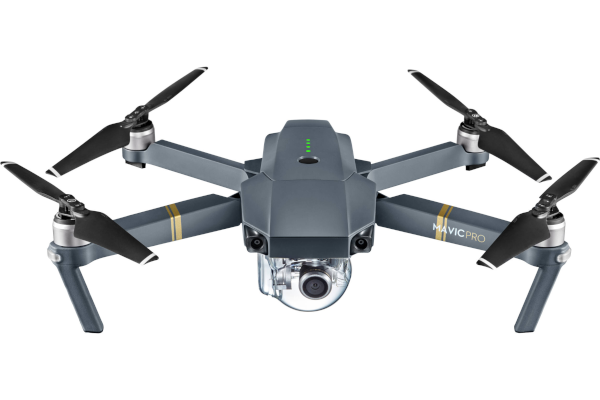
Being ultra-portable has been one of the trademarks of the Mavic drones. The foldable arms design of the original Mavic Pro has since been imbibed by many other drone brands, but few have been able to match the size and weight combination of the DJI series.
| Parameter | Mavic Pro | Mavic Pro Platinum | Mavic Air | Mavic 2 Pro | Mavic 2 Zoom |
|---|---|---|---|---|---|
| Weight | 743 g | 743 g | 430 g | 907 g | 905 g |
| Folded Dimensions (L x W x H) | 198 x 83 x 83 mm | 198 x 83 x 83 mm | 168 x 83 x 49 mm | 214 x 91 x 84 mm | 214 x 91 x 84 mm |
| Rank | 2.5 | 2.5 | 1 | 4.5 | 4.5 |
In terms of both size and weight, the Mavic Air is the clear winner. Designed as a cross between the Mavic Pro and the Spark, the Mavic Air comes in at less than half the weight of the Mavic 2 drones.
Camera
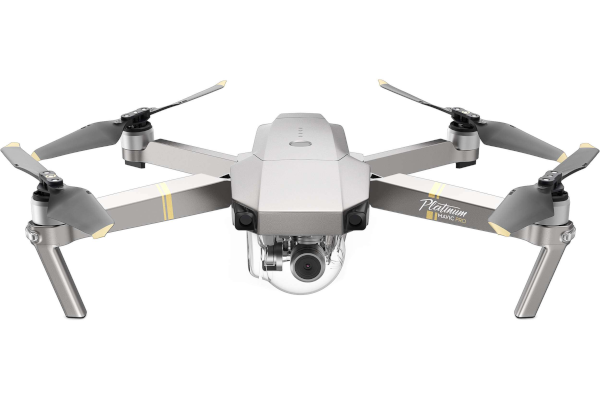
Another selling point of the Mavic series is the fact the DJI was able to equip them with such high-quality cameras despite their small sizes.
| Parameter | Mavic Pro | Mavic Pro Platinum | Mavic Air | Mavic 2 Pro | Mavic 2 Zoom |
|---|---|---|---|---|---|
| Sensor | 1/2.3” | 1/2.3” | 1/2.3” | 1” | 1/2.3” |
| Stills | 12MP | 12MP | 12MP | 20MP | 12MP |
| Video | 4K | 4K | 4K | 4K | 4K |
| Slow motion | 720p @ 120fps | 720p @ 120fps | 1080p @ 120fps | 1080p @ 120fps | 1080p @ 120fps |
| Field of view | 78.8° | 78.8° | 85° | 77° | 83° |
| Optical Zoom | – | – | – | – | 2x |
| ISO Range | 100 – 3200 | 100 – 3200 | 100 – 3200 | 100 – 12800 | 100 -3200 |
| Rank | 4.5 | 4.5 | 3 | 1 | 2 |
Looking at the camera specs, it is very clear that the Mavic 2 drones belong in a higher class compared to all the older Mavic models. In particular, the Mavic 2 Pro with its 20MP Hasselblad camera and a much wider ISO range deserves to be discussed with the likes of the Phantom 4 Pro as a professional-grade photography drone.
We decided to give the Mavic 2 Pro a very slight edge over the Mavic 2 Zoom, which is also interesting but might not have the same level of professional appeal. The Mavic 2 Zoom sets itself apart with an optical zoom lens which opens up a lot of possibilities in capturing stills and videos.
The camera specs of the original Mavic Pro and the Mavic Pro Platinum did not age well, especially when placed side by side with the Mavic Air. They essentially have the same camera, but the Mavic Air has enhanced slow motion video capabilities.
Gimbal
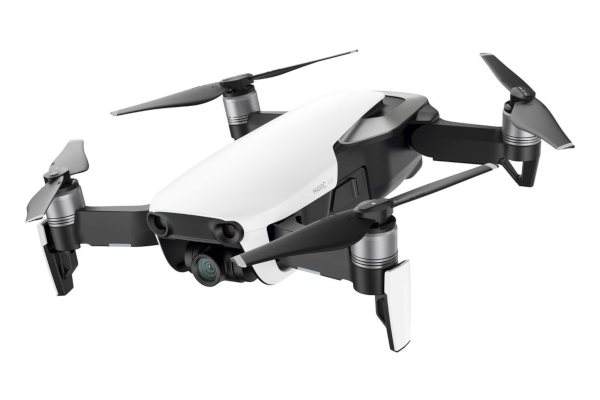
All Mavic drones have 3-axis stabilization, but slightly differ in their movement ranges.
| Parameter | Mavic Pro | Mavic Pro Platinum | Mavic Air | Mavic 2 Pro | Mavic 2 Zoom |
|---|---|---|---|---|---|
| Pitch | -90° to 30° | -90° to 30° | -90° to 17° | -90° to 30° | -90° to 30° |
| Pan | – | – | -12° to 12° | -75° to 75° | -75° to 75° |
| Rank | 4 | 4 | 4 | 1.5 | 1.5 |
We have to give the edge to the Mavic 2 drones in terms of gimbal range for having a true panning function. The Mavic Air was capable of some panning but seemed to have given up a little on its pitch range, landing it at around the same ranking as the older Mavic Pro versions. The gimbal of the Mavic 2 drones also appeared to have a more rugged design, which hopefully will translate to them being less prone to damage.
Flight Time
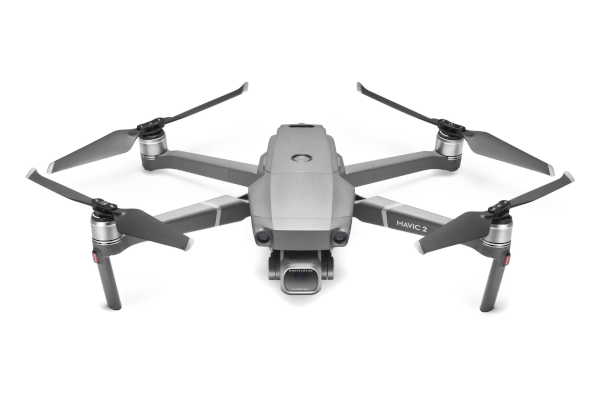
| Parameter | Mavic Pro | Mavic Pro Platinum | Mavic Air | Mavic 2 Pro | Mavic 2 Zoom |
|---|---|---|---|---|---|
| Battery capacity | 3,830 mAh | 3,830 mAh | 2,375 mAh | 3,850 mAh | 3,850 mAh |
| Flight Time | 27 min | 30 min | 21 min | 31 min | 31 min |
| Rank | 4 | 3 | 5 | 1.5 | 1.5 |
Equipped with a higher capacity battery and the upgraded Electronic Speed Controllers developed for the Mavic Pro Platinum, the Mavic 2 drones just manage to eke out the victory in this category. The Mavic Pro Platinum was designed specifically as an upgraded, more efficient version of the Mavic Pro, and it shows in the pronounced increase in flight time despite the use of the same battery. With the technology developed for the Mavic Pro Platinum, DJI has managed to design the Mavic 2 with the longest flight time out of all the DJI drones.
The Mavic Air pales in comparison to all the other Mavic drones in this department. The much smaller battery capacity is the price that the Mavic Air had to pay for its smaller and lighter build.
Obstacle avoidance
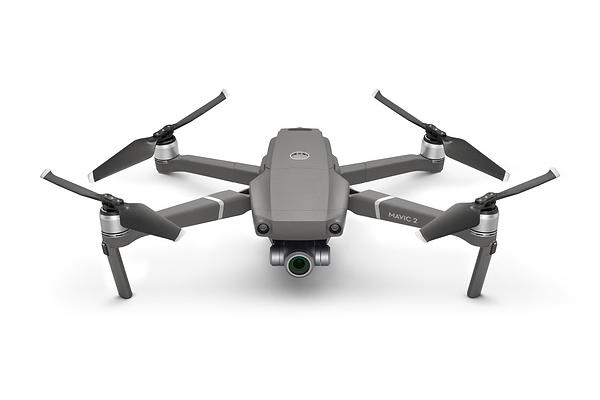
The obstacle avoidance technology of the Mavic drones is another characteristic that sets it apart from all other ultra-portable drones in the market. With better obstacle avoidance, Mavic drones can operate more autonomously.
| Parameter | Mavic Pro | Mavic Pro Platinum | Mavic Air | Mavic 2 Pro | Mavic 2 Zoom |
|---|---|---|---|---|---|
| Sensors | Forward, downward | Forward, downward | Forward, backward, downward | Omni-directional | Omni-directional |
| Rank | 4.5 | 4.5 | 3 | 1.5 | 1.5 |
The Mavic 2 drones once again take the top spot in this category. Equipped with more sensors than all other Mavic drones, both Mavic 2 variants exhibit an unequaled degree of environmental awareness. The Mavic Air, being a relatively newer model, also has a superior obstacle avoidance system compared to the Mavic Pro and Mavic Pro Platinum.
Range
The range is as much a function of the drone as it is of the remote controller. It is defined as the maximum distance in which the drone and the remote controller can still communicate.
| Parameter | Mavic Pro | Mavic Pro Platinum | Mavic Air | Mavic 2 Pro | Mavic 2 Zoom |
|---|---|---|---|---|---|
| Range | 4.3 mi | 4.3 mi | 2.5 mi | 5 mi | 5 mi |
| Rank | 3.5 | 3.5 | 5 | 1.5 | 1.5 |
The Mavic 2 drones come with the upgraded OcuSync 2.0 which resulted to a range improvement of 0.7 miles or around 1 kilometer. It’s not a huge improvement, but most drone pilots would agree that it’s an amount that matters. Take note that even the 4.3-mile range of the original Mavic Pro is well outside of line of sight, so taking these drones to the edge of their effective range definitely runs the risk of losing them should you run into an accident.
Speed
The speed of a drone is the result of a complex interplay of propeller design, motor power, aerodynamics, and the weight of the drone.
| Parameter | Mavic Pro | Mavic Pro Platinum | Mavic Air | Mavic 2 Pro | Mavic 2 Zoom |
|---|---|---|---|---|---|
| Max speed | 40 mph | 40 mph | 42.5 mph | 44.7 mph | 44.7 mph |
| Rank | 4.5 | 4.5 | 3 | 1.5 | 1.5 |
With more powerful motors, improved propeller designs, and upgraded ESCs, the Mavic 2 drones once again exhibit superiority in the speed department. The Mavic Air takes second place honors, likely aided by its lightweight build. Still, there’s only about 4mph spread between all the Mavic drones – evidence that all of them are impressively fast.
Intelligent Flight modes
Intelligent Flight modes allow the Mavic drones to fly autonomously. This can be done by the drone pilot determining a flight path, or a series of waypoints for the drone to follow.
| Parameter | Mavic Pro | Mavic Pro Platinum | Mavic Air | Mavic 2 Pro | Mavic 2 Zoom |
|---|---|---|---|---|---|
| Intelligent Flight Modes |
|
|
|
|
|
| Rank | 1.5 | 1.5 | 5 | 3.5 | 3.5 |
We give the original Mavic Pro and Mavic Pro Platinum the edge in this department, as the new Mavic 2 drones seem to have done away with Gesture Control. It’s probably not a big deal for most professional drone pilots, but Gesture Control was one of the marketing points of the super popular Spark and Mavic Pro drones. Perhaps DJI deemed that Gesture Control was geared towards more casual drone users, and we think that’s an accurate assessment. However, we hope that this move does not mean the end of Gesture Control.
Camera modes
Camera modes are fun little add-ons that allow drone pilots to capture unique shots and videos with just a few clicks and gestures. They have been a staple of DJI drones, and the Mavic series certainly does not disappoint.
| Parameter | Mavic Pro | Mavic Pro Platinum | Mavic Air | Mavic 2 Pro | Mavic 2 Zoom |
|---|---|---|---|---|---|
| Camera modes |
|
|
|
|
|
| Rank | 4.5 | 4.5 | 3 | 2 | 1 |
With the increased versatility provided by its zoom lens, we will have to give this category to the Mavic 2 Zoom. Its signature Dolly Zoom mode is more than enough to make it stand out from all other Mavic drones.
The Mavic Air holds a slight edge over the Mavic Pro and Mavic Pro Platinum with the addition of two camera modes: Asteroid and Boomerang. For professional drone photographers, most of these camera modes may seem like novelty features, but it’s hard to refute that they are a lot of fun to play around with.
Price
Prices quoted here are merely approximations – you can probably find somewhat different prices, depending on which store look into.
| Parameter | Mavic Pro | Mavic Pro Platinum | Mavic Air | Mavic 2 Pro | Mavic 2 Zoom |
|---|---|---|---|---|---|
| Approximate price | $909 | $999 | $799 | $1,499 | $1,249 |
| Rank | 2 | 3 | 1 | 5 | 4 |
The purchase price is where the Mavic Air truly shines. At more than $100 cheaper than the Mavic Pro, it is a great value for money drone that does not skimp on the features and build quality. The Mavic 2 drones are much more expensive than all the other Mavic variants, which might be a huge turn-off for casual drone users.
Overall score card
The results of our ranking exercise are summarized below:
| Parameter | Mavic Pro | Mavic Pro Platinum | Mavic Air | Mavic 2 Pro | Mavic 2 Zoom |
|---|---|---|---|---|---|
| Portability | 2.5 | 2.5 | 1 | 4.5 | 4.5 |
| Camera | 4.5 | 4.5 | 3 | 1 | 2 |
| Gimbal | 4 | 4 | 4 | 1.5 | 1.5 |
| Flight time | 4 | 3 | 5 | 1.5 | 1.5 |
| Obstacle avoidance | 4.5 | 4.5 | 3 | 1.5 | 1.5 |
| Range | 3.5 | 3.5 | 5 | 1.5 | 1.5 |
| Speed | 4.5 | 4.5 | 3 | 1.5 | 1.5 |
| Intelligent Flight Modes | 1.5 | 1.5 | 5 | 3.5 | 3.5 |
| Camera Modes | 4.5 | 4.5 | 3 | 2 | 1 |
| Price | 2 | 3 | 1 | 5 | 4 |
| Overall Rank | Tied for 4th | Tied for 4th | 3rd | 2nd | 1st |
Based on our comparison and cumulative rankings, the Mavic 2 Zoom just barely passes the Mavic 2 Pro as the best Mavic drone. Although the Mavic 2 Pro has the better quality camera, the versatility of the Mavic 2 Zoom and its significantly lower price has placed it one step ahead of its contemporary. In any case, both Mavic 2 drones are superior to the older models in several aspects: camera quality, gimbal range of movement, obstacle avoidance technology, maximum speed, maximum range, flight time, and number of flight modes and camera modes. They are truly the best representative of the technology that DJI can manage to wrangle into its ultra-portable Mavic design.
The Mavic Air continues to impress by taking the 3rd spot, despite its much shorter flight time and range. The Mavic Air makes up for these shortcomings with a much more compact and portable package which also happens to come at much lower price. In terms of value for money and appeal to more casual drone users, it’s hard to find a drone that will top the Mavic Air.
Both the Mavic Pro and Mavic Pro Platinum rank last out of the 5 Mavic drones. Even though the Mavic Pro Platinum has a longer flight time due to its upgraded propellers and ESC, it is also slightly more expensive than the Mavic Pro. Even upon its release, it has been argued that the Mavic Pro Platinum was not going to be such a smart buy – it came with a very minor upgrade to the Mavic Pro, and was released only shortly before the revolutionary Mavic Air.
Final thoughts
Despite having to rank them against each other, we have to say that none of the Mavic drones disappoint. DJI has been the market leader for drones in the past several years, and it shows in the quality and innovation that they have exhibited with the Mavic drones. They have managed to pack professional-grade technology in drones that are small enough to fit on the palm of your hand – that feat enough is impressive at all fronts.
The Mavic product line has something for everybody. For beginners and casual drone users, the Mavic Air is a relatively inexpensive drone that has a high-quality camera, and obstacle avoidance system, and a suite of autonomous camera modes and flight modes. If you feel that its flight time is too limited, then you can opt for the Mavic Pro or Mavic Pro Platinum, which offers all the same benefits but with a much higher capacity battery.
For professional drone photographers or experienced drone pilots, the Mavic 2 drones are both impressive pieces of equipment that can rival most professional-grade drones out today. For pure image quality and the ability to capture crisp photos even in low light, the Mavic 2 Pro with its Hasselblad camera is the perfect solution. The Mavic 2 Zoom is for the photographer who works better with more flexibility and creativity. Despite their high price tags, the Mavic 2 drones can be worth every penny in the right hands.

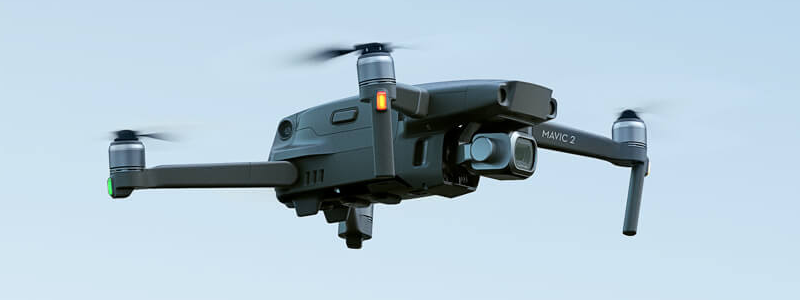
Here is the deal: A scoring system doesn’t truly represent which drone is ‘best’. It’s what you’re looking for.
I have the Pro Platinum and the Air. I will tell you that for my purposes I MUCH prefer the Pro Platinum. It’s not even close for me vs the Air. That’s not to take away from the air, it’s fantastic, and it’s great to carry with me on hikes do to it’s size. I would clearly prefer the Mavic 2, and if I was buying today, I’d probably go that route.
Here are my reasons I like the Pro/Platinum much better:
– Flight time: by about 10 minutes or more. That’s a big deal.
– Occusync: Much smoother, less choppy. Everyone says the enhanced WIFI is fine, and in the mountains, that’s fine, but throw in any interference and it’s frustrating. It makes it very difficult to get your motion shots. People say it’s acceptable.. yet it’s better than the spark, but it’s not quite good enough compared to the pro.
– Sport mode: No one mentions this, but video works great on the pro line in sport mode, but because the gimbal in protected the Air, when you drop to sport mode, the top image in obscured by the drone. When you move left and right, the camera tilts. The camera may be better, but if you like high speed sweeps like I do, the Air in pretty much unusable for that purpose.
– Controller: I like having a digital readout. I lose phone control with the air and never regained it.. With the Pro line, you can use the controller to see how far away it is, etc. I also like the exposure control wheel.
– Noise: I’ve heard the Air at over 2000′! It’s not just loud, the frequency is higher and much more noticeable. If you’re trying no to bother people, people WILL know you’re there with the air. Note: If you’re at the beach, the sound of the waves kind of drowns out the sound, but in the mountains or a neighborhood, it carries… a lot.
These also happen to be my most important aspects. To me, the Pro/Platinum camera and portability is acceptable, and I’m not going to buy a drone for gestures or quickshot modes. I want one that’s fun to fly. I will say the air is more nimble, and therefore is more fun to fly in short range, but if you want to use the remote stream at all, it’s not enough. I do think the Air charger was well though out, and the removable joysticks are nice. Again, if I could choose any, it would the Mavic Pro 2… then the zoom, then the platinum, then the pro, then the air. But cost is an issue. I can see why some people would prefer it to for the camera and size, but again, I like to records in sport mode.. so that hurts the air.
Oh, one other air issue.. true story. The compass gets out of calibration easily. Most times I have to calibrate it. I was on a secluded Island and wanted to fly my Air. My phone would not connect because of moisture in the USB port. The Air would not start or launch, and I could not tell why because there was no app connected. i couldn’t calibrate without the app. I would have lose this video if I didn’t have the pro, that started right up without need of calibration or the app. I was able to fly get the stats on the readout, and while I couldn’t see what I was recording, I did get images and video.. I did not miss out completely. In fact, there have been multiple times with the air that I’m had to calibrate prior to launch, and what should have been quick launch and return turned into 10 minutes fiddling with the drone for 5 minutes flight time. Do not get me wrong, I do love the air for hiking trips, but if I had to sell one drone, it would be the air, not the pro.